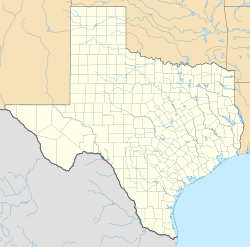West Line Historic District (Austin, Texas) facts for kids
Quick facts for kids |
|
|
West Line Historic District
|
|

The A. J. Jernigan House, also known as Las Ventanas, is one of the historic houses in the district.
|
|
| Location | Austin, Texas |
|---|---|
| Area | 6500 acres |
| Built | 1871 |
| Architectural style | Late 19th And 20th Century Revivals |
| NRHP reference No. | 05001166 |
| Added to NRHP | October 12, 2005 |
The West Line Historic District is a special neighborhood in central Austin, Texas. It's a place where many people live, and it has a lot of history. This district covers about 90 city blocks. It is located west of downtown Austin.
The West Line Historic District is bordered by Baylor Street to the east. Fifth Street is its southern border. Thirteenth Street is to the north. Texas State Highway Loop 1 is its western edge. It sits south of the Old West Austin Historic District. It is also southeast of the Clarksville Historic District.
Exploring the West Line Historic District
This historic area was added to the National Register of Historic Places in 2005. This means it is recognized as an important place in history. It includes several smaller neighborhoods. These are Raymond Heights, Raymond Plateau, and Shelley Heights.
A Look Back in Time
The land for this district was first divided into more than 25 smaller sections. This happened between 1871 and 1948. These sections were created from larger government lands. These lands were west of Austin's original city center.
At first, the area had large, spread-out estates. But as Austin's population grew, these big estates were divided. They became smaller plots for more homes.
In 1887, the West Sixth Street Bridge was built. This bridge went over Shoal Creek. After the bridge, a streetcar line was extended into the district. People called this the West Line. This streetcar made it easier for people to move to the area. It helped new neighborhoods grow.
Homes and Buildings
Because the area grew bit by bit, and it has hills, the streets are not perfectly straight. They form an irregular grid pattern.
You can find some important old houses and buildings from the 1800s here. But most of the buildings are from the 1910s to the 1930s. These were built when the area was growing fast. Many of them are bungalows. These homes often show styles like Craftsman and Classical Revival.
The people who first planned this area wanted it to be a place for homes. Even today, the West Line Historic District is mostly a residential area. It keeps its strong neighborhood feel.



